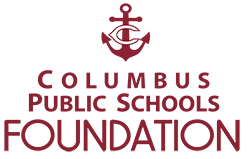Correct Mouth Placement for Sounds
Cristine Niles, Kindergarten Teacher, 2022-2023 School Year
Description & Need:
Many young students struggle with correctly pronouncing phonemes, the individual sounds in our language. When sounds are mispronounced, misunderstood, and confused with other sounds, the accuracy of decoding words in the text, as well as accuracy in writing, drastically declines. Understanding what their mouth, tongue, and breath need to do in order to correctly pronounce a specific sound can help students map the words quickly in their brains. It will help bring the learning to long-term memory.
The kindergarten team has tried to focus more on the formation of the mouth, tongue, and use of breath when teaching the different sounds during the reading cycles this year. However, we would like to have more knowledge about this area so we can better teach the students. We are asking for a teaching manual that describes in kid-friendly terms how to pronounce sounds, a set of picture cards showing children making the correct mouth formation for each sound, and a set of small compact mirrors which will be used for students to see their own mouths when teaching the sounds. We would also like to put up a larger mirror in the classroom next to the picture of the focus sound so students can practice with a friend, use it during choice time, or review it as they transition to another place in the room if needed.
How project meets Instruction Goals and Mission Statement:
"I can use sounds and kindergarten words to read." This is the kindergarten learning goal for reading. In order of students to be successful at reading fluently, they first must be able to distinguish between individual sounds. Helping students think about what their mouth is doing will help students connect the phoneme, the sound, to the grapheme, and what we write to represent the phoneme. Teaching every student correct mouth formation for sounds will especially help those students who may struggle with certain pronunciations but may not receive speech services.
Major Objectives:
The major objective of this project is for students to increase their fluency, more specifically their accuracy when reading grade-level text and to increase their accuracy and speed when writing.
Teaching Methods:
The project materials will be used in different ways. Teachers will use the teaching manual to learn how best to describe mouth and tongue formations to students. The Kid Lips Picture Cards will be shown to students in a whole group setting when the sound is introduced and then posted in the room as a reference. Small individual mirrors will be used in a whole group setting, with each student having their own. These mirrors will be used to help kids see what their own mouth is doing. The picture cards and mirrors can be used in a small intervention group as well when needed.
Grade Level Impacted:
During the project year, the kindergarten grade level will be affected. Approximately 75 students will benefit from this project. If data shows the project to be successful, there may be potential for expansion of this project to lower elementary grade levels and resource classrooms.
Additional Materials:
No additional materials will be required from the district to implement this project.
Project Evaluation:
The project's effectiveness will be evaluated using student decoding data collected during clipboard checks, our common assessment for decoding and reading words in text. Data will also be collected on the accuracy of writing CVC words using spelling dication, our common writing program for practicing letter sounds, CVC words, high-frequency words, and sentences.
